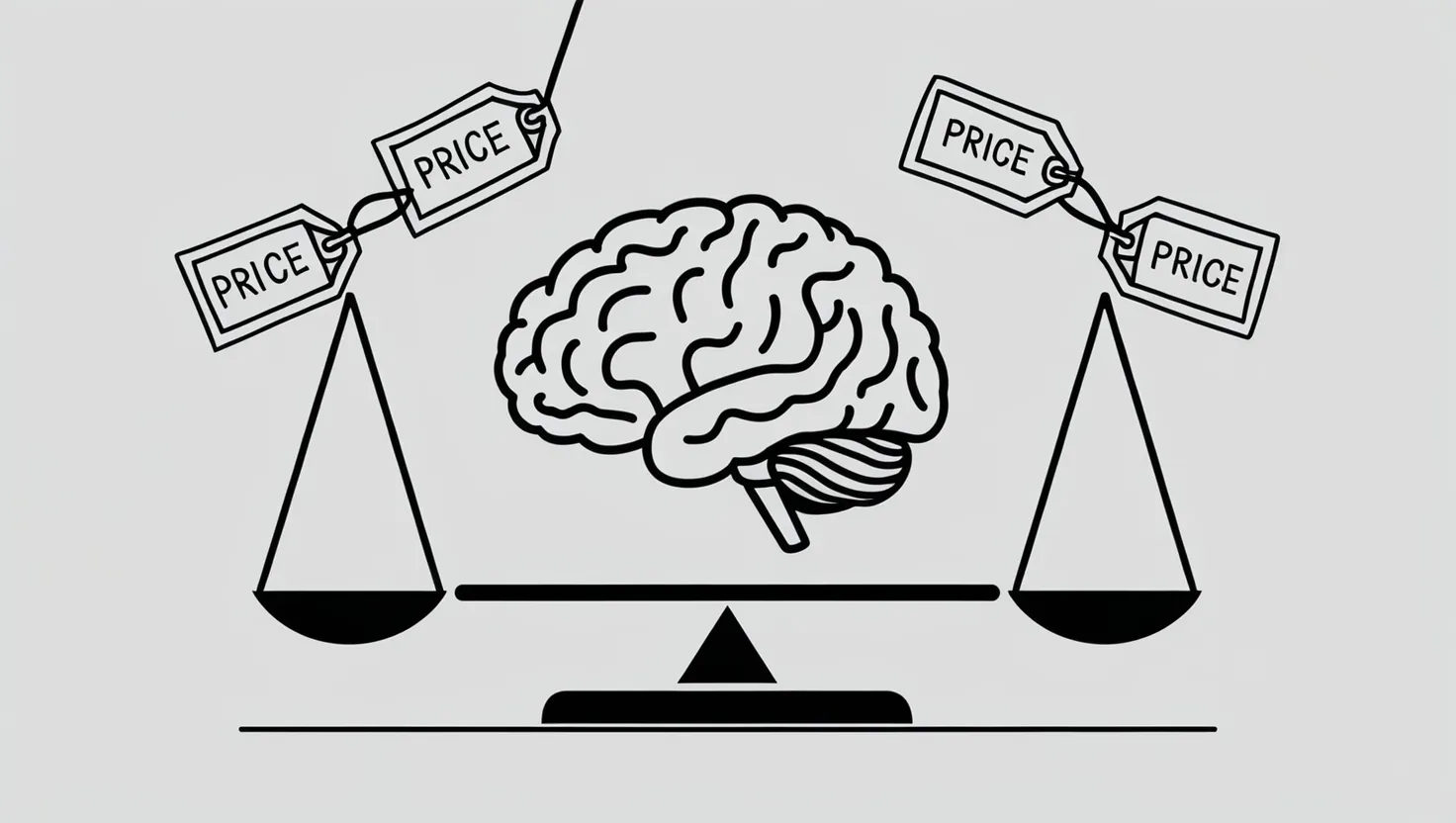In the world of consumer behavior, Dan Ariely’s “Predictably Irrational” has reshaped how we understand the decision-making process. By emphasizing the irrational aspects of our choices, Ariely exposes the subtle, often unseen psychological mechanisms that drive our purchasing decisions. Let’s explore seven pricing psychology tactics derived from his insights, which can give us a fresh perspective on how pricing influences our perceptions and choices.
One of the most impactful tactics is anchor value perception. Imagine you’re shopping for a television. You first see a model priced at $1,500. After contemplating, you encounter another at $1,200. This second price feels much more attractive because your brain has already anchored your perception to the higher price. This initial price shapes how you evaluate the value of subsequent options. “First impressions matter,” as they say. How often do initial price points sway our willingness to pay more than we should?
Next, consider the concept of price relativity. We rarely evaluate prices in isolation; rather, we compare them against similar products. When faced with several choices, our decisions become reflective of the comparative prices rather than the intrinsic value of the items. Suppose you’re at a restaurant with three size options for a drink: small for $2, medium for $4, and large for $6. If the medium is the default choice, the value of each drink is determined relative to the others rather than an absolute measure of what each drink should cost. Have you ever chosen a product simply because it was positioned as the “best value”?
On the other hand, there’s the zero-price effect—a phenomenon that reveals the overwhelming draw of “free” offerings. The allure of receiving something at no cost can overshadow rational decision-making. When given a choice between a free item and a higher-value offering for a nominal fee, many people will gravitate towards the free item, even if it’s less beneficial. This quirk of human psychology shows how the term “free” can sway our choices more than a direct monetary comparison. Have you ever opted for a free sample, even when you knew it wasn’t what you really wanted?
The decoy option further manipulates our decision-making framework. This tactic involves introducing a third option that serves as an inferior choice compared to the desired product. For instance, consider a subscription model where you’re presented with three choices: Option A (digital only for $59), Option B (print only for $125), and Option C (bundle for $125). Most people would choose the bundle because the print option makes it look much more attractive, despite being equally priced. It’s a clever design—why do you think we don’t always recognize when we’re being subtly nudged toward a preference?
Another interesting aspect is the pain of paying. The psychological discomfort we often feel when making a purchase can be alleviated by separating the act of purchasing from the payment method. For example, subscription services cleverly create a sense of value by charging a low monthly fee rather than a lump sum. This tactic reduces the immediate impact of payment, making us more likely to commit to the purchase. How many subscriptions do you maintain, often forgetting about the cumulative expense they represent?
Ariely also touches upon the price-quality association—the idea that higher prices often lead to heightened perceptions of quality. It’s intriguing how some consumers equate cost with value. You might hesitate to purchase a shampoo priced at $5, assuming it can’t match the performance of the $20 variant. This association can lead to increased satisfaction when we perceive we’re paying more for higher quality. Isn’t it odd how much trust we place in price as a measure of worth?
Lastly, there’s the profound influence of social norms. Our willingness to pay can be heavily influenced by community expectations. If everyone around you is willing to pay a premium for a brand, you might feel compelled to do the same, fearing social repercussions. This reflects how our purchasing choices are not solely individual but also contextual and relational. When faced with peer pressure or social cues, how many times have you chosen to go along rather than stand out?
To effectively implement these tactics, businesses should consider establishing premium anchor prices first. For instance, showing a high-priced option can make the subsequent tiers seem more reasonable. Demonstrating multiple pricing tiers further capitalizes on our tendency to make relative comparisons rather than isolated evaluations. Providing free add-ons instead of discounts can enhance the perception of value without diminishing the core offering. Additionally, including strategic comparisons, such as decoys, can help steer consumer choices toward more profitable options. Simplifying payment processes—like offering subscriptions—can mitigate the pain of paying, turning it into a more acceptable experience. Emphasizing quality cues in premium offerings by highlighting unique features or testimonials can further enhance perceived value. Furthermore, aligning pricing strategies with anticipated social norms can create a comforting familiarity that increases willingness to spend.
By understanding and applying these seven pricing tactics, we reveal a world of strategic possibilities for both business practices and personal purchasing choices. Ariely’s insights remind us that our decisions are not just driven by logic, but by a complex web of psychological triggers. Whether we realize it or not, we are continually influenced by these nuanced pricing strategies in our everyday lives. As we navigate this marketplace, let’s apply a more analytical lens—what biases and perceptions might we uncover within ourselves? Ultimately, being aware of these psychological dynamics can empower us, fostering more informed and intentional choices in our consumption practices. As you reflect on your purchasing habits, consider: how much do you let external influences guide your decision-making?






